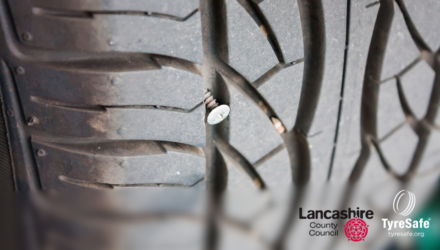The past two years have put a huge strain on fleets in terms of management. The world was turned upside down by lockdown restrictions, and with it travel came to a standstill. But despite this monumental change, fleets have still pressed on with progress.
Reorganising aging fleets, electrification, and returning to the roads have all been on the cards for fleet managers recently – but with constrained budgets, is imagining the fleet of tomorrow possible today? Here, Peter O’Driscoll, Managing Director, RingGo is going to take a look at busting some mobility myths for fleet managers to show that change is happening and it doesn’t always have to break the bank.
Myth 1: Ditching fossil fuels is too costly for businesses
When it comes to electric vehicles (EVs), many businesses are focused on maintaining healthy cashflow, supplying staff to meet demand levels, and organising the return to the office – it’s not surprising that ploughing money into electric fleets, with work systems and staff training, is a daunting prospect.
But the desire to go green exists. A survey from RingGo found that over half (55%) of fleet owners are expecting a shift to EVs in the next two years. EVs are becoming more accessible with support coming from the government who has promised to improve smart mobility infrastructure with a £20 million boost to promote electrification and cure range anxiety.
To demonstrate the improved accessibility, there are now more EV charging sites than petrol stations in the UK. As of April 2022https://www.zap-map.com/statistics/, the total number of locations that have a public charging point installed is 19,707, compared to 8,380 petrol stations. This means employees can travel the distance safely around the UK in electric vehicles, with more scope to charge and go.
Myth 2: The commute is dead and the roads will be quieter
While some major companies explore the opportunities of flexible working, one thing remains true for any business operating a large fleet: if you have people on the road, working shifts, site-jumping or collecting and delivering goods, then flexibility doesn’t come without its downsides.
Embedding a hybrid model of flexibility that works in harmony with the realities of fleet management is a tall order, but this doesn’t mean people aren’t getting out on the roads. If anything, it’s likely we’ll see more cars on the road because of the safety concerns from the pandemic. Almost two years of hand sanitiser, social distancing and masks have naturally left their mark, with crowded public transport holding little appeal. And while it’s true that global supply challenges have impacted the automotive market productivity and vehicle registrations in 2022, according to DfT, at the end of September 2021 there were 39.2 million licensed vehicles in Great Britain. This is a 1% increase compared to the end of September 2020 showing that our roads are anything but quiet.
With a change in mindsets over the last two years, safety, cost and accessibility considerations are likely to push people away from public transport and towards vehicles, with car clubs and ridesharing becoming the preferred way of commuting. Inevitably, this will lead to more traffic on roads, and technology will need to step in to help manage the new commute and management of fleets.
 Myth 3: Green transformation is still a long way off
Myth 3: Green transformation is still a long way off
With plenty of businesses navigating ‘boom and bust’ demand levels, it’s natural that when they’re still trying to regroup, recoup and recover, the idea of making eco-friendly progress isn’t a top priority.
With the support put in place by the government during the pandemic winding down, coronavirus loan payments due, and the furlough scheme retiring, the result is that businesses need to be savvier with their resources, all while battling a shortage of labour and rising operational costs. And yet, businesses face a commercial decision. The reality is that financial support to go green exists now but there’s no guarantee it will in the future. The Government’s green agenda is being brought forward, not pushed back, with the ban of selling petrol and diesel vehicles looming in 2030.
Changes aren’t far off and the time to think about implementing new policy is now. From our fleet survey, we found that two-fifths (42%) of fleet owners already have an electric contingent in their fleets, which shows strides are being made for the electrification of the industry. Electric vehicle (EV) sales are on the up globally, surging by 140% over the last twelve months. Concerns around climate change and sustainability are on a similar trajectory, spurring on new commitments to end the sale of fossil fuel vehicles worldwide by 2040; the green revolution is happening in the here and now.
What the future holds
The rise in automation and smart technology offers opportunities to iron out fleet logistics through improved use of data. In addition, wider vehicle changes mean that new greener ways of working can be brought to the forefront.
By leveraging intuitive digital solutions to improve mobility experiences for employees working remotely whether in a hybrid model or in the field – businesses can generate intelligent ways to fund the physical infrastructure needed to create lasting eco-friendly change.
The temptation after the disruption of the past year might be to stand still. But with pressures setting the pace for change, across legislative, cultural and environmental areas, the advantage is with businesses who see past the mobility myths and embrace the opportunities available in the current day.
Author: Peter O’Driscoll, Managing Director, RingGo



















